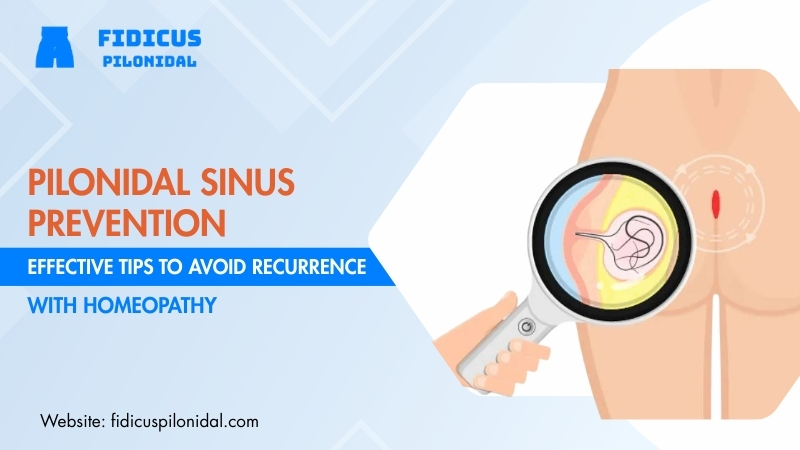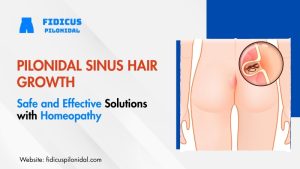Pilonidal sinus is a painful and often recurring condition that affects the area near the tailbone, causing discomfort, swelling, and sometimes infection. While medical and surgical treatments are available, preventing recurrence is crucial to avoid repeated complications and improve overall quality of life. Homeopathy provides a safe, non-invasive, and holistic approach to pilonidal sinus prevention by addressing the root causes, supporting natural healing, and enhancing the body’s immunity.
Along with homeopathic remedies, simple lifestyle measures play a significant role in Pilonidal Sinus Treatment Without Surgery. Maintaining proper hygiene, keeping the affected area clean and dry, avoiding prolonged sitting, wearing loose clothing, and adopting a healthy diet can greatly reduce the risk of recurrence. Regular monitoring and early intervention at the first signs of irritation or discomfort also help prevent the condition from worsening.
What is Pilonidal Sinus and Why Prevention Matters
Pilonidal sinus is a chronic skin condition near the tailbone where hair, debris, and dead skin get trapped under the skin. The symptoms of pilonidal sinus include pain, swelling, pus discharge, and recurrent infections. It is more common in young adults, especially men, people with thick body hair, those who sit for long periods, or individuals who are overweight. While pilonidal sinus treatment often involves minor surgery, recurrence rates are high—up to 40%—if preventive measures are not followed. Prevention is therefore crucial to avoid repeated infections, abscess formation, and the need for multiple surgeries.
- Most common in young adults aged 15–40 years.
- Higher risk in men and people with thick body hair.
- Prolonged sitting and obesity increase recurrence risk.
- Recurrence can reach up to 40% without preventive care.
- Homeopathy helps in healing, reducing inflammation, and preventing relapse.
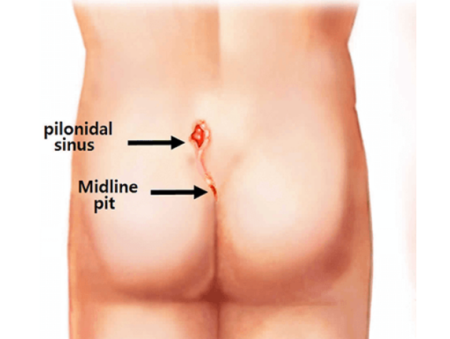
Step 1: Maintain Proper Hygiene for Pilonidal Sinus Prevention
Maintaining proper hygiene is the simplest and most effective method for Pilonidal Sinus prevention. The area near the tailbone is prone to sweat accumulation, friction, and bacterial growth, all of which can trigger infections or abscess formation. Poor hygiene not only increases the risk of developing a pilonidal sinus but also contributes to its recurrence after treatment.
Tips for Effective Hygiene:
- Daily Cleansing: Wash the tailbone area with mild, antibacterial soap or body wash. Avoid harsh soaps that can irritate the skin.
- Thorough Drying: Always dry the area completely after bathing, as moisture creates a breeding ground for bacteria. Using a soft towel or gentle air drying is recommended.
- Sweat Management: After prolonged sitting, workouts, or heavy sweating, use antiseptic wipes to clean the area. This reduces bacterial load and prevents infections.
- Powder Application: Medicated powders or talcum powder can help keep the skin dry and reduce friction.
- Clothing Hygiene: Change undergarments daily and avoid tight clothing that traps sweat. Cotton-based clothes are preferable for airflow and breathability.
- Bathing Frequency: In hot or humid climates, consider showering twice a day if prone to excessive sweating.
- Post-Exercise Care: Always cleanse and dry the area after physical activity to prevent bacterial growth and hair debris accumulation.
Medical Insight: Consistent hygiene can reduce the recurrence of pilonidal sinus by up to 30%, according to studies. Good hygiene also complements homeopathy-based pilonidal sinus treatment, enhancing healing and reducing inflammation, thereby lowering the likelihood of future flare-ups.
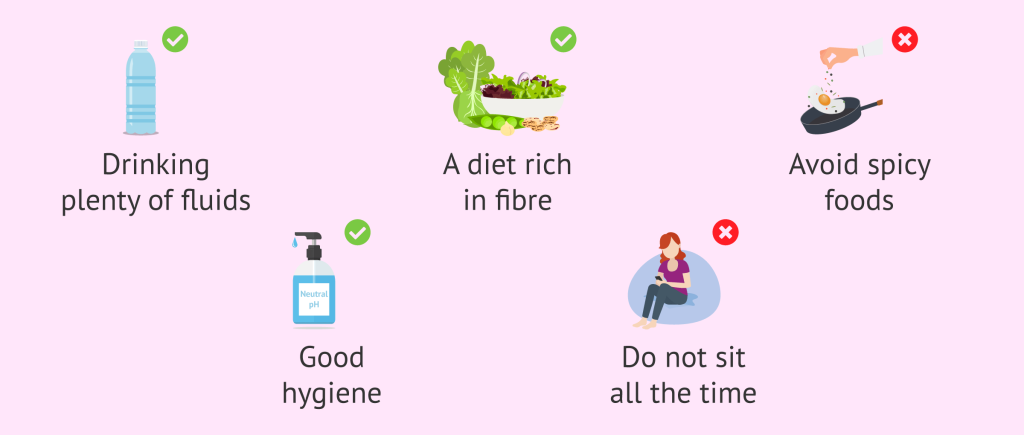
Step 2: Hair Management to Reduce Recurrence
Hair penetration is the primary cause of pilonidal sinus, as loose or ingrown hairs can pierce the skin, triggering inflammation, infection, and abscess formation. Effective hair management is therefore essential for how to prevent pilonidal sinus and minimize the risk of recurrence after treatment.
Recommended Practices:
- Regular Trimming or Shaving: Trim or shave the hair around the tailbone area every 2–3 weeks. Shorter hair reduces the chances of hair embedding into the skin. Use clean, sharp tools and avoid shaving too closely to prevent cuts.
- Hair Removal Creams: Depilatory creams can be used cautiously, but always test a small area first to avoid irritation or allergic reactions. Avoid applying on broken or sensitive skin.
- Laser Hair Removal: For those with thick or coarse body hair, laser hair removal provides a long-term solution. It reduces hair density and growth, significantly lowering the risk of hair re-penetration and recurrent pilonidal sinus.
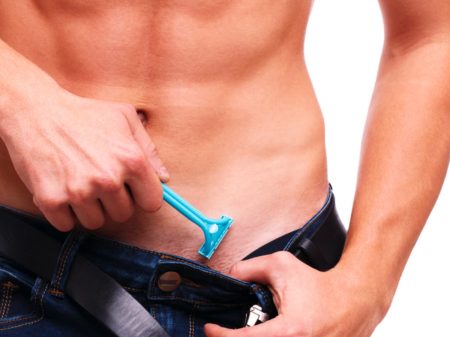
Step 3: Avoid Prolonged Sitting
People with sedentary lifestyles—drivers, office workers, students—are more prone to pilonidal sinus. Prolonged pressure leads to friction, irritation, and sweating around the tailbone.
Tips to reduce risk:
- Stand and Stretch Regularly: Take breaks every 30–40 minutes to relieve pressure on the tailbone and improve blood circulation.
- Use Cushions or Donut-Shaped Pillows: Sitting on soft or specially designed cushions reduces friction and pressure on the affected area.
- Incorporate Light Exercise or Walking: Daily movement, such as walking or stretching exercises, helps prevent stiffness, reduces sweating, and improves overall circulation in the lower back and buttock area.
- Avoid Prolonged Sitting on Hard Surfaces: Whenever possible, alternate between sitting and standing, especially during work or long drives.
Scientific Note: Reducing pressure improves blood flow and prevents hair from embedding under the skin, which is a major factor in Pilonidal Sinus prevention.
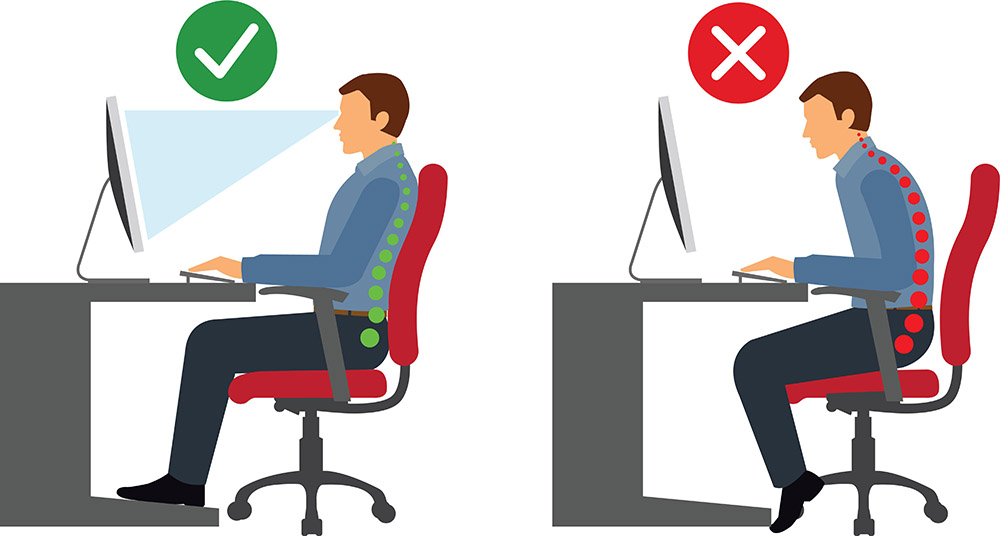
Step 4: Maintain Healthy Weight and Balanced Diet
Excess body weight is a significant risk factor for pilonidal sinus recurrence, as it increases skin folds, friction, and sweating in the tailbone area. Diet not only helps maintain a healthy weight but also plays a crucial role in boosting immunity, improving skin health, and supporting faster healing after pilonidal sinus treatment.
Dietary Recommendations:
- High-Fiber Foods: Include whole grains, fruits, vegetables, and legumes to prevent constipation, which can increase pressure on the tailbone and aggravate the sinus.
- Stay Hydrated: Drink 8–10 glasses of water daily to flush out toxins and support healthy skin.
- Balanced Nutrition: Consume lean proteins, fresh fruits, vegetables, and healthy fats to promote tissue repair and reduce inflammation.

Step 5: Choose Breathable Clothing
Wearing the right clothing is important for Pilonidal Sinus prevention. Tight or synthetic fabrics trap heat and moisture, increasing the risk of infection and recurrence.
Clothing Tips:
- Wear loose-fitting cotton underwear and pants to allow airflow.
- Change sweaty clothes promptly after exercise or prolonged sitting.
- Avoid synthetic fabrics that trap moisture; moisture-wicking fabrics are ideal for active individuals.
- Avoid tight waistbands or belts that increase friction on the tailbone.
Why It Matters: Proper clothing reduces friction, sweating, and skin irritation, which are key factors in preventing pilonidal sinus recurrence.

Step 6: Homeopathy for Pilonidal Sinus Treatment and Long-Term Prevention
Homeopathy offers a holistic approach to pilonidal sinus treatment, addressing the root causes while strengthening the body’s natural healing ability. This reduces inflammation, promotes faster recovery, and lowers the risk of recurrence, making it an effective option for long-term Pilonidal Sinus prevention.
Common Homeopathic Remedies
- Silicea: Helps expel pus, remove embedded hairs, and accelerate natural healing of sinus tracts.
- Hepar Sulphuris: Effective for painful, pus-filled abscesses; reduces swelling and inflammation.
- Calcarea Sulphurica: Promotes tissue repair, prevents pus formation, and supports recovery from chronic infections.
- Myristica Sebifera: Known as a “natural surgeon” in homeopathy, it helps wounds heal quickly and prevents repeated abscesses.
- Graphites: Useful for patients prone to recurrent boils, skin eruptions, and delayed healing.
Why Homeopathy Works:
- Treats the root causes like susceptibility to infection and weak healing.
- Reduces recurrence and strengthens immunity.
- Provides a safe, non-surgical alternative to conventional treatment.
Pro Tip: Combining homeopathy with hygiene, hair management, and lifestyle measures ensures better prevention and long-term relief.

Step 7: Lifestyle Measures to Prevent Recurrence
Even after successful treatment, lifestyle habits play a crucial role in preventing pilonidal sinus recurrence. Neglecting daily care, hygiene, and posture can lead to repeated infections and discomfort. Adopting healthy habits supports healing, strengthens immunity, and reduces the risk of new sinus formation.
Key Practices:
- Avoid Scratching or Pressing the Area: Irritation can worsen the condition or trigger new sinus formation. Gentle care of the tailbone area is essential.
- Keep Nails Trimmed and Clean: This prevents bacterial transfer when touching or cleaning the affected area. Maintaining hand hygiene is equally important.
- Seek Early Consultation: If you notice redness, swelling, discharge, or mild pain, consult a homeopathy doctor for pilonidal sinus immediately. Early intervention can prevent serious complications.
- Regular Exercise and Movement: Light exercises, walking, or stretching improve blood circulation in the lower back, reducing stagnation and promoting tissue healing.
Why It Helps: Lifestyle measures reduce friction, irritation, and bacterial growth in the tailbone area. Combined with hygiene, hair management, diet, clothing choices, and homeopathy, these practices form a comprehensive approach to how to prevent pilonidal sinus and ensure long-term relief.
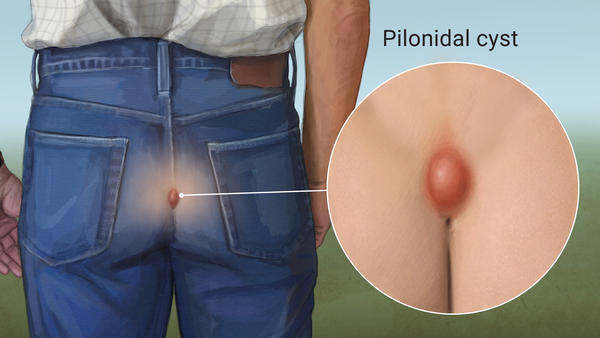
Step 8: Regular Follow-Ups and Monitoring
Long-term monitoring is a crucial part of Pilonidal Sinus prevention. Even after initial treatment or homeopathic care, regular follow-ups help ensure complete healing, prevent recurrence, and address minor issues before they become serious problems.
Key Practices:
- Track Progress with Regular Visits: Schedule periodic check-ups at a trusted homeopathy clinic to monitor healing, evaluate the affected area, and detect early signs of recurrence.
- Adjust Remedies and Care: Homeopathic treatment is individualized. Based on healing status, remedies may need adjustments, and additional supportive measures can be recommended.
- Personalized Lifestyle Guidance: During follow-ups, practitioners can provide tailored advice on hygiene, hair management, exercise, clothing, and diet to maintain a healthy tailbone area.
- Early Detection of Complications: Regular monitoring helps identify minor redness, swelling, or discharge early, preventing abscess formation or repeated infections.
Expert Insight: Studies and clinical experience show that pilonidal sinus recurrence is often preventable when patients follow early interventions, maintain healthy habits, and adhere to homeopathic care plans. Long-term monitoring not only reduces recurrence risk but also improves overall healing, comfort, and quality of life.

Step 9: When to Seek Medical Attention
Even with preventive care, some situations require immediate attention:
- Sudden severe pain or swelling near the tailbone.
- Fever along with pus discharge.
- Rapidly spreading redness or warmth around the sinus.
Prompt treatment prevents complications and ensures pilonidal sinus prevention remains effective.
Final Thoughts
Pilonidal sinus can be painful and recurrent, but prevention is achievable with proper hygiene, hair management, lifestyle changes, diet, and homeopathy. While surgery may provide temporary relief, holistic care ensures long-term results. At Fidicus Pilonidal, we provide expert guidance on pilonidal sinus treatment and teach patients how to prevent pilonidal sinus naturally. With a combination of homeopathy, lifestyle advice, and regular monitoring, you can avoid recurrence and live pain-free.

